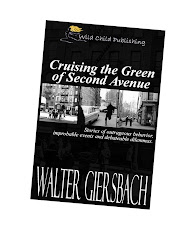 |
|
Pearl
White in The House of Hate, filmed in
1918 in Fort Lee.
|
Sad to say,
fewer people are going into a dark theater to watch movies as more people channel
surf the TV or even cut the cable and pull up an on-demand film through
Netflix, Hulu or Amazon.
And with it, a part of our state’s history may be disappearing
too. The film industry started here. We were the movie capital of the
world, and it started in West Orange. William Kennedy Laurie Dickson was an
employee in Thomas Edison's Orange laboratory, and it was Mr. Dickson who invented
a camera and projector called a Kinetograph. A peephole on top of the large
cabinet, called a Kinetoscope, allowed a viewer to look at moving pictures.
By 1892, Dickson and Edison had finished versions of the
products. They used flexible 35-mm film from the Eastman Company (Kodak) to
take the pictures.
Edison and his assistants then needed to produce things to
show. In December 1892, the Kinetographic Theater, opened in West Orange. Only
sunlight was strong enough to allow images to be seen on movie film at that
time, so the roof of the studio opened to let in sunlight. Inside was a stage,
barely 12 square feet.
Movies
Move Out to the World
The following year, Edison demonstrated the Kinetoscope at
the Brooklyn Institute of Arts and Sciences. To his joy, the public loved it. The
first Kinetoscope parlor opened in New York, followed by similar openings all
over the country.
Quickly, some 75 films were made, each lasting about 20
seconds. They filmed many different people and actions , including vaudeville
acts, plays, magic tricks, and dancing. The “stars” were Buffalo Bill,
gunslinger Annie Oakley, and strongman Eugene Sandow.
Then came The Great
Train Robbery that viewers could see on a screen instead of a peephole. The 14 scenes were shot on location in and
around Patterson. (You can see this wonderful 116-year-old drama online through
the Library of Congress at https://www.loc.gov/item/00694220.)
Stars
Are Born
In addition to Buffalo Bill and Annie Oakley, moving
pictures created “stars.” People like Mary Pickford, Douglas Fairbanks, Pearl
White and Harold Lloyd built their reputations in New Jersey and called Fort
Lee home. Roscoe “Fatty” Arbuckle, Will Rogers, Mary Pickford, Dorothy and
Lillian Gish, Lionel Barrymore, the Keystone Cops and Rudolph Valentino could
be seen strolling through town.
In 1907,
Edison’s company came to Fort Lee to shoot “Rescued from an Eagle’s Nest,”
featuring D.W. Griffith in his first starring role. The cliffs of the Palisades
and the town’s boulder-strewn woodlands offered a dramatic background for the
short silent film. Competing motion picture companies quickly followed suit, finding
that Fort Lee’s diverse landscape could double for a range of settings from
exotic Algeria to Sherwood Forest. By 1918, 11 major studios were operating in
the town, according to the Fort Lee Film Commission.
World War I spelled the decline of movie-making in New
Jersey. California’s climate was too
inviting, and there was cheap land. New Jersey is still a popular film location,
and choosing New Jersey as a
place to film a production will result in a 20% tax credit on production
material purchased within the state. But. our state still had one
more claim to fame coming.
From the Comfort of Your Car
On
June 6, 1933, motorists began parking their cars on the grounds of Park-In
Theaters, the first-ever drive-in movie theater, on Crescent Boulevard in Camden,
New Jersey.
Park-In
Theaters (the term “drive-in” came later) was the brainchild of Richard
Hollingshead, a movie fan and a sales manager at his father’s company, Whiz
Auto Products. Reportedly, he was inspired by his mother’s struggle to sit comfortably
in traditional movie theater seats. His idea was for an open-air theater where you
could watched movies in the comfort of your own automobiles. “He experimented
in his driveway with different projection and sound techniques, mounting a 1928
Kodak projector on the hood of his car, pinning a screen to some trees, and
placing a radio behind the screen for sound,” according to the website, ‘This
Day in History.’
Hollingshead
was issued a patent in May of 1933 and opened Park-In Theaters, Inc. less than a
month later. He charged 25 cents per car and 25 cents per person, with no group
paying more than one dollar. The idea caught on, but Hollingshead’s patent was
overturned in 1949. The craze had taken over, however, and drive-in theaters
began appearing all over the country.
This
medium ran its course until the rise in suburban real estate, more walk-in
theaters, color TV, and — finally — the introduction of video killed the
drive-in concept. As of 2014, there
were about 348 drive-ins still operating in the U.S.
We’re Still Creating Movie Stars
You can’t
escape the fact that some of the most popular film celebs come from the Garden
State. Meryl Streep was a Summit
native James Gandolfini hailed from Westwood.
John Travolta was an Englewood boy. Then there’s Bruce Willis from Penns Grove,
Queen Latifah from Newark, Tom Cruise from Glen Ridge, Kevin Spacey from South
Orange. Oh, heck, find your own favorites at the website http://nj1015.com/top-20-famous-actors-from-new-jersey/.


